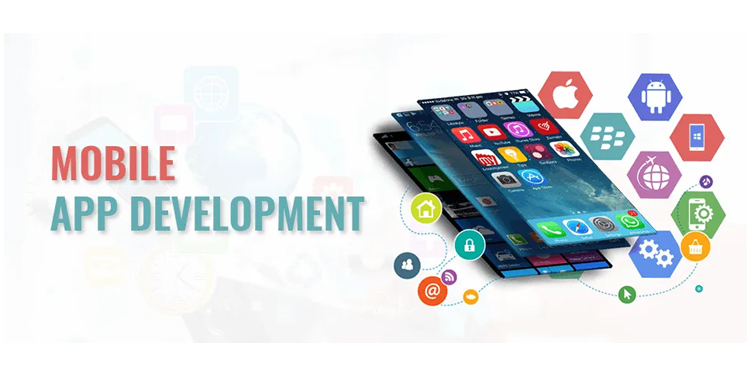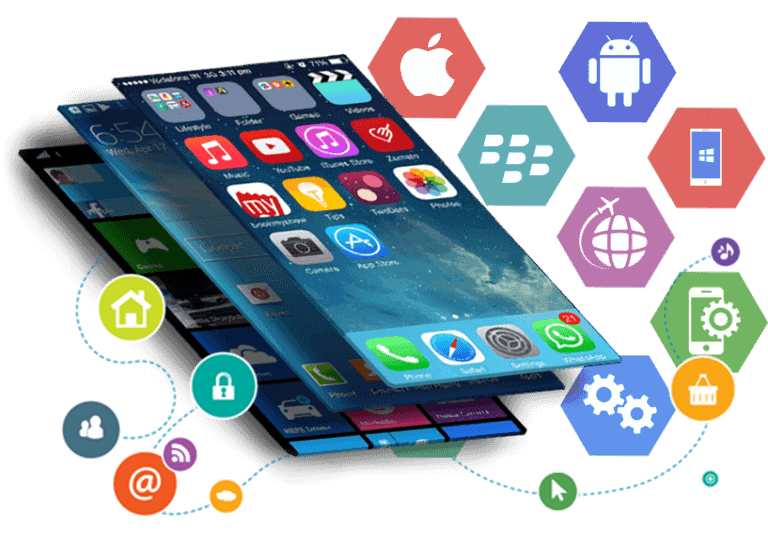Mobile App Development for Education: Revolutionizing Learning in the Digital Age
The advent of mobile technology has significantly impacted various sectors, with education being one of the most transformative areas. Mobile app development for education has opened up new avenues for learning, making it more accessible, engaging, and personalized. In a world where smartphones have become ubiquitous, educational apps have become essential tools that cater to the needs of students, educators, and institutions. This article explores the landscape of mobile app development for education, its benefits, challenges, and prospects.
The Rise of Educational Mobile Apps
The rise of educational mobile apps is closely linked to the rapid proliferation of smartphones and tablets. As mobile devices became more affordable and internet access more widespread, the demand for educational content that could be accessed anytime and anywhere grew. This demand was met with a surge in mobile app development focused on education, ranging from apps for young children to platforms for higher education and professional development.
Historical Context
The roots of educational technology can be traced back to the early days of computers and the Internet. However, it was not until the late 2000s, with the advent of the Apple App Store and Google Play Store, that mobile app development for education truly took off. The convenience of having educational resources in the palm of one’s hand revolutionized learning, making it more interactive and engaging.

Types of Educational Mobile Apps
Educational mobile apps come in various forms, each catering to different learning needs and audiences. The following are some of the most common types:
1. Learning Management System (LMS) Apps
Learning Management System (LMS) apps are designed to facilitate online learning by providing a platform for course delivery, content management, and student assessment. Popular LMS apps include Moodle, Blackboard, and Canvas. These apps allow educators to create and manage courses, track student progress, and provide feedback, all within a mobile-friendly interface.
2. Language Learning Apps
Language learning apps like Duolingo, Babbel, and Rosetta Stone have gained immense popularity due to their gamified approach to learning new languages. These apps use interactive lessons, quizzes, and rewards to make language learning fun and effective, catering to users of all ages.
3. E-Book and E-Library Apps
E-books and e-library apps provide access to a vast collection of books, research papers, and educational materials. Apps like Kindle, Google Play Books, and Audible have made it easier for students and educators to access educational content on the go. Many of these apps also offer features like note-taking, highlighting, and offline reading.
4. STEM Education Apps
STEM (Science, Technology, Engineering, and Mathematics) education apps focus on teaching complex concepts through interactive simulations, quizzes, and problem-solving exercises. Examples include Khan Academy, Photomath, and Tynker. These apps help students grasp difficult concepts by providing visual aids and step-by-step explanations.
5. Test Preparation Apps
Test preparation apps like Quizlet, Khan Academy, and Magoosh provide students with practice tests, flashcards, and study materials to prepare for standardized tests like the SAT, GRE, and GMAT. These apps offer personalized study plans and progress tracking to help students achieve their goals.
6. Special Education Apps
Special education apps are designed to support students with disabilities or learning difficulties. Apps like Proloquo2Go and Choiceworks help students with communication, organization, and social skills through customizable visual aids and interactive tools.
Benefits of Mobile App Development for Education
The development of educational mobile apps offers numerous benefits for students, educators, and institutions alike. These benefits include:
1. Accessibility and Convenience
One of the most significant advantages of educational mobile apps is their accessibility. Students can access learning materials anytime and anywhere, making it easier to study at their own pace. This is particularly beneficial for distance learning, as it allows students in remote areas to access quality education without the need for physical attendance.
2. Personalized Learning
Mobile apps can be tailored to meet the individual needs of each student. Features like adaptive learning, where the app adjusts the content based on the student’s performance, make it possible to create personalized learning experiences. This ensures that students can learn at their own pace and focus on areas where they need improvement.
3. Engagement and Interactivity
Educational mobile apps often incorporate gamification elements, such as quizzes, badges, and leaderboards, to make learning more engaging. Interactive features like videos, animations, and simulations also help students better understand complex concepts. This level of engagement is difficult to achieve with traditional teaching methods.
4. Cost-Effectiveness
Mobile apps can significantly reduce the cost of education by eliminating the need for physical textbooks, paper-based assessments, and other traditional educational resources. Many educational apps offer free or affordable access to high-quality content, making education more accessible to a broader audience.
5. Real-Time Feedback and Assessment
Educational apps can provide instant feedback on quizzes, assignments, and tests, allowing students to understand their mistakes and learn from them immediately. This real-time feedback is crucial for continuous learning and improvement. Educators can also use analytics provided by the apps to track student progress and identify areas that need attention.
6. Collaboration and Communication
Many educational apps include features that promote collaboration and communication among students and educators. Discussion forums, chat rooms, and group projects can be facilitated through these apps, encouraging students to work together and share knowledge. This fosters a sense of community and enhances the learning experience.

Challenges in Mobile App Development for Education
While the benefits of educational mobile apps are numerous, there are also several challenges that developers and educators must address to maximize their effectiveness.
1. Digital Divide
Despite the widespread use of smartphones, not all students have equal access to mobile devices and the Internet. The digital divide, particularly in low-income and rural areas, can hinder the adoption of educational apps. Developers and educators must consider ways to make their apps accessible to all students, regardless of their socio-economic background.
2. Data Privacy and Security
With the increasing use of mobile apps in education, concerns about data privacy and security have become more prominent. Educational apps often collect sensitive information, such as student performance data and personal details. Developers must ensure that their apps comply with data protection regulations and implement robust security measures to protect user data.
3. Quality and Content Accuracy
The quality and accuracy of educational content are critical to the success of any educational app. Developers must collaborate with educators and subject matter experts to ensure that the content is accurate, up-to-date, and aligned with educational standards. Poor-quality content can mislead students and undermine their learning experience.
4. User Experience and Interface Design
A well-designed user interface (UI) and user experience (UX) are essential for the success of an educational app. The app should be intuitive, easy to navigate, and visually appealing to keep students engaged. Developers must conduct thorough user testing to identify and address any usability issues.
5. Retention and Engagement
Keeping students engaged and motivated over time can be challenging, especially when the initial novelty of the app wears off. Developers must continuously update the app with new content, features, and rewards to maintain user interest. Gamification, social sharing, and progress tracking can also help sustain engagement.
6. Compatibility and Device Fragmentation
Mobile app developers must ensure that their apps are compatible with a wide range of devices, operating systems, and screen sizes. Device fragmentation can make it challenging to provide a consistent user experience across different platforms. Developers must also consider the performance of the app on lower-end devices to reach a broader audience.
Educational Consulting and Services: A Comprehensive Overview
Case Studies: Successful Educational Mobile Apps
To understand the impact of mobile app development on education, let’s examine a few case studies of successful educational apps that have made a significant difference in the learning landscape.
1. Duolingo
Duolingo is a language-learning app that has gained widespread popularity due to its gamified approach to language education. With over 500 million users, Duolingo offers courses in more than 30 languages. The app uses bite-sized lessons, quizzes, and rewards to make language learning engaging and accessible to people of all ages. Duolingo’s success lies in its ability to combine entertainment with education, making it one of the most effective language-learning tools available.
2. Khan Academy
Khan Academy is a non-profit educational platform that provides free online courses, lessons, and practice exercises in various subjects, including math, science, and humanities. The Khan Academy app has been instrumental in making quality education accessible to students around the world. The app offers personalized learning experiences, allowing students to learn at their own pace and focus on areas where they need improvement. Khan Academy’s commitment to providing free, high-quality education has made it a global leader in educational technology.
3. Photomath
Photomath is an app that helps students solve math problems by simply taking a picture of the problem. The app provides step-by-step solutions and explanations, making it an invaluable tool for students struggling with math. Photomath’s success lies in its ability to combine cutting-edge technology with educational content, providing students with immediate assistance and improving their understanding of math concepts.

The Future of Mobile App Development for Education
As technology continues to evolve, the future of mobile app development for education looks promising. Several trends are expected to shape the landscape of educational apps in the coming years:
1. Artificial Intelligence and Machine Learning
Artificial Intelligence (AI) and Machine Learning (ML) are poised to play a significant role in the future of educational apps. AI-powered apps can provide personalized learning experiences by analyzing student performance data and adjusting the content accordingly. For example, AI-driven tutors can offer real-time assistance, answer questions, and provide feedback, making learning more efficient and effective.
2. Augmented Reality (AR) and Virtual Reality (VR)
Augmented Reality (AR) and Virtual Reality (VR) are emerging technologies that have the potential to revolutionize education. AR and VR can create immersive learning experiences by bringing abstract concepts to life and providing students with hands-on, interactive experiences. For example, a VR app could allow students to explore historical sites, conduct virtual science experiments, or learn about the human body in 3D.
3. Gamification and Social Learning
Gamification will continue to be a key trend in educational app development. By incorporating game elements such as points, badges, and leaderboards, developers can increase student engagement and motivation. Social learning features, such as peer collaboration, group projects, and discussion forums, will also become more prevalent, fostering a sense of community and encouraging knowledge sharing.
4. Cross-Platform Integration
As the demand for educational content grows, cross-platform integration will become increasingly important. Educational apps will need to seamlessly integrate with other platforms, such as Learning Management Systems (LMS), e-books, and online courses, to provide a cohesive learning experience. Developers will also need to focus on making their apps compatible with various devices, including smartphones, tablets, and laptops.
5. Microlearning and On-Demand Learning
Microlearning, which involves delivering content in small, easily digestible chunks, will become more popular as students seek flexible and on-demand learning options. Educational apps will offer bite-sized lessons that can be completed in a short amount of time, making learning more manageable and less overwhelming. On-demand learning will also allow students to access specific content whenever they need it, catering to their individual learning needs.
6. Focus on Inclusivity and Accessibility
The future of educational apps will place a greater emphasis on inclusivity and accessibility. Developers will need to create apps that cater to diverse learning needs, including those of students with disabilities. Features such as text-to-speech, adjustable font sizes, and customizable interfaces will become standard, ensuring that all students can benefit from mobile learning.
Online Tutoring and Teaching: The Evolution of Education in the Digital Age
Mobile app development for education has transformed the way we learn, making education more accessible, engaging, and personalized. While there are challenges to overcome, such as the digital divide and data privacy concerns, the benefits of educational apps are undeniable. As technology continues to advance, the future of educational apps looks bright, with AI, AR, and VR set to take learning to new heights. By focusing on inclusivity, accessibility, and cross-platform integration, developers can create educational apps that cater to the diverse needs of students worldwide. The potential for mobile apps to revolutionize education is immense, and we are only beginning to scratch the surface of what is possible.




Post Comment